Radon is a colorless, odorless, and tasteless noble gas that is often naturally present in the environment. Unfortunately, despite this, it is also radioactive, and according to the U.S. Environmental Protection Agency (EPA), it is the second leading cause of lung cancer. This raises the question of how to test for radon in water!
Furthermore, this dangerous chemical can become absorbed into the very water you drink as small amounts of radioactive elements such as uranium in the soil breaks down, releasing the radioactive gas. In most cases, it will be released into the air before it reaches your faucet, but for homes supplied by well water, this is not the case.
The good news is there are easy ways to test for radon in your water supply to learn whether it contains radon and at what level. We’ll also show you the best treatment methods if you test positive for radon! So let’s get started and take a closer look at the risks of radon and how you can test for it.
How Does Radon Get Into Well Water?
Radon is released by a variety of radiological contaminants, such as uranium and thorium, which exist naturally in the soil in many areas. As these radiological contaminants decay, they gradually release small amounts of radon, which can leach into the water. In lakes, rivers, and reservoirs, this will slowly be released into the air.
However, in well water, there may not be enough time between your faucet and the groundwater for the radon to escape. The components of soil vary widely based on location, which means some areas may have high levels of radon in the groundwater, and other regions may have none.
Related Reading: Our Favorite Well Water Filters For Radon
Is Radon In Water Dangerous?
Radon is an orderless, colorless, tasteless radioactive gas. It is released naturally from water, soil, and rocks. Unfortunately, this gas is dangerous and can cause cancer. In the case of water, ingesting radon can cause stomach cancer.
If you do get your water from an underground source, make sure the radon levels are no higher than 4 pCi/L, which is the EPA-suggested radon level for community water suppliers. However, not all water contains radon. If you get your water from a surface source, most radon that could have been present in the water would have escaped into the air before reaching your home. It is typically only people who get their water from an underground source that need to be concerned about radon.
Negative Effects Of Consuming Radon In Water
If a person is exposed to radon in the air, it can damage lung tissue and eventually lead to lung cancer. However, if a person drinks water containing radon, it can have the following negative effects:
- Increased risk of stomach cancer
- Nagging cough
- Chest pains
- Coughing up blood
- Loss of appetite
If your water supply comes from an open water source, chances are any radon will be able to escape into the air. However, if your supply comes from an underground well, it is more likely to remain in your drinking water. If you believe you have been exposed to radon in drinking water, contact your health care provider immediately.
Should I Test My Well Water for Radon?
Yes, if you have a private well the EPA recommends testing it for radon at least once per year. It is best to know if your water has dangerous levels of radon. It is especially important to test your water for radon if your area is known to have elevated levels. This is especially true if you are purchasing a new home as part of the inspection process.
The National Cancer Institute estimates that 15,000 – 22,000 people die from radon-related cancer each year in the United States.
But the reality is that much of the radon may transfer from your water and into the air from showering, laundry, or washing dishes and pose a risk of being breathed in. Therefore, it is critical to test your well water for radon on a regular basis.
How To Test For Radon In Well Water

There are a few ways to test for radon in water. If you have well water, it is up to you to test your water radon. The best way to do that is with a laboratory test kit. If you have city water supply, you will be able to search your water provider’s annual water quality report to see if it tested positive for radon.
Laboratory Water Test Kit
Using a laboratory water test kit is the most accurate way to determine if you have radon in your well water. This works by collecting a water sample of your water, and sending the sample to a certified lab for it to be analyzed. The nice thing with a laboratory test is they often will test your water for a variety of contaminants beyond radon, so you get a holistic view of your water quality.
I recommend using the Freshnss Labs water test kit because it includes a radon screen along with dozens of other harmful contaminants. Simply take a water sample in the provided vials and send the kit back to the lab. Within three days you will get a detailed report with the exact concentration of radon and any health risks.
Laboratory Water Test Kit
Analyzed in a certified laboratory
Includes detailed report with EPA benchmarking and safety concerns
Water Quality Database
Municipal water suppliers are required by the EPA to provide an annual water test indicating the levels of various contaminants detected in the water supply. To find your local water quality report, go to the EPA website and search for your county. This will show all the data including if your water supplier tested positive for radon and at what level.
EPA Radon Zone Map
The EPA has created a map outlining the levels of radon in groundwater across the U.S. The map is based on the average radon concentrations in public water systems across the country which can be a helpful indicator in deciding to test your water for radon.

How To Treat Water If It Tests Positive for Radon
It is important to treat radon if you find it is present in your water. But if your water does have radon in it, it is likely coming into your home through the soil and into your basement.
When treating radon in your well water, it is vital to remove it before it can enter your home and transfer to the air. Point-of-entry filters are used to treat the water as soon as it comes into your home. These systems are installed where the main water supply enters your home so the radon is treated immediately.
Here are some of the most effective treatment methods to remove radon from your water:
Granular Activated Carbon Filter
One way to treat your water if it tests positive for radon is to use a granular activated carbon (GAC) unit. You can find these units in many different sizes and models. However, they all remove radon in the same way. These GAC units consist of a fiberglass tank that has granular activated carbon in it. This granular activated carbon traps the radon that is in the water and retains it. However, due to the small size of the carbon particle, it can become clogged with contaminants or sediment that may be found in some water.
There are some GAC units that have a backwashing feature that removes sediment. Unfortunately, though, this feature has the downside of sometimes lowering the ability of the carbon to remove radon over time. The best way to avoid having your GAC tank become clogged is to remove the source of the sediment or put a sediment filter in place before the GAC tank.
Aeration System
According to the Environment Protection Agency, the best technology that can be used to remove radon from water is aeration. Home aeration units remove the radon from water by vigorously moving the water and then collecting the dissolved radon gas and venting it into the outside air. This works quite well. Today’s home aeration units can remove up to 99.9% of radon.
However, when you are trying to decide if you should have an aeration unit installed, you should consider the overall quality of your water. If your water has high levels of other contaminants, such as manganese or iron, among others, it may be necessary to pre-treat your water in order to avoid clogging your aeration unit. In addition to pre-treatment, you may also want to consider disinfection equipment due to the fact that some aeration units may let bacterial contamination into your water system.
Frequently Asked Questions
What is a safe level of radon in drinking water?
Should I still test for radon if I have a public water supplier?
Conclusion
As you have seen, radon in your home’s water can be extremely dangerous to the health of you and your family. Fortunately, following the steps above, you can test the level of radon present and, if necessary, take action to reduce it using an activated carbon filter or, in extreme cases, an aeration system. Simply taking steps to get started testing can offer a great deal of peace of mind.










